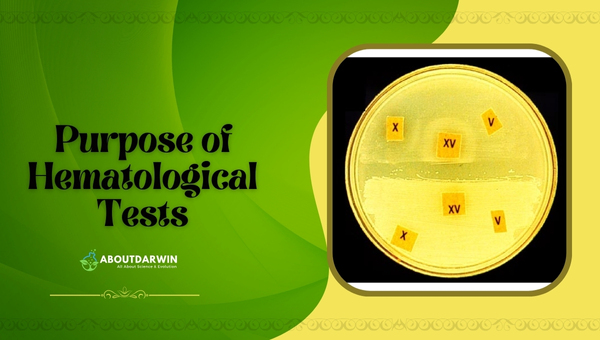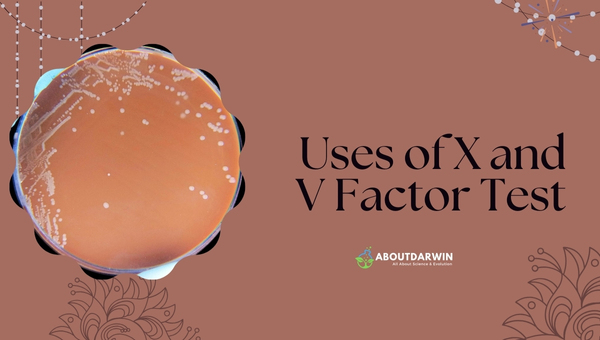Physical Address
304 North Cardinal St.
Dorchester Center, MA 02124
In the realm of diagnostic medicine, hematological tests play an instrumental role. These vital examinations analyze components present in our blood to detect potential diseases and conditions. Among these tests is one quite crucial, yet not often talked about – the X and V Factor Test.
The X and V Factor Test has profound implications, mainly concerning bacterial infections. By understanding more about this test, we can demystify what goes on behind those lab doors and gain a deeper appreciation for the sophistication of modern diagnostics.
Contents
Hematological tests are a critical component in the realm of medicine, providing us with valuable insights into the health of our blood and the body’s biochemical composition.

They act as a gateway to intricately recognize the conditions residing within our system by studying aspects like blood count, clotting tendencies, and detection of infections and diseases, among others.
One such valuable hematological test is the X and V factor test. This diagnostic tool performs an essential role in microbial identification, more specifically differentiating Haemophilus species by determining their dependency on X (hemin) and V (nicotinamide adenine dinucleotide or NAD) factors for growth.
Understanding these factors not only aids doctors in precise diagnostics but also better equips researchers in microbial analysis.
Also Read: Sabouraud Dextrose Agar (SDA): Composition, Uses, and More
The basic Principle of the X and V Factor Test is given below :
The “X” in the test stands for hemin (an iron-containing compound). It’s a pivotal ingredient some bacterial species need, functioning as a catalyst in numerous biochemical reactions. Its role is equivalently important as multivitamins act for us human beings – essential yet not inherently produced.
Once entered into our bodies, these microbes start extracting this factor from our red blood cells. They use heme (a component of hemoglobin) that they twist into their preferred form—hemin. Thus, this X-factor becomes one constituent ensuring their survival and replication.
Next comes our “V-factor” or Nicotinamide Adenine Dinucleotide (NAD). This organic molecule is often associated with metabolism processes within bacterial colonies, where it acts like an electron carrier during cellular respiration.
What’s interesting here is that only specific types of bacteria require this external supply of NAD. These opportunistic bugs conveniently pick up ample traces present on blood agar plates.
Another testimony to their resourcefulness! Looking deeper into which organisms are dependent on what factors becomes a critical facet when identifying pathogens – marking the immense utility behind understanding both “X” and “V” factors.
Also Read: Indole Test – Unlocking the Procedure and its Key Insights
To kickstart, let’s break down the essentials. An X and V factor test may seem formidable at first; however, in simpler steps, it is akin to a baking recipe with precise ingredients and procedures.
Here is the stepwise explanation of the procedure :
Unveiling the mystery behind the X and V factor test, we gear up to explore an intriguing aspect of bacteriology. This simple yet revealing assay is essential in differentiating between certain types of bacteria – those with particular growth factor requirements. Join us as we set the stage for this diagnostic experiment, where every tool plays a pivotal role.
Well-thought-out planning can save time later on while conducting experiments in the microbiology lab – like considering having all material ready before starting, ensuring your workspace maintains sterility throughout the process, etc., proving again how wisdom can make science look easy-peasy!
Also Read: How Do Family Trees Work? Unraveling The Intricacies
The X and V factor test is not only a vital tool in bacteriological research but also has paramount implications in medical microbiology.

This specialized test unlocks a multitude of applications, elevating its significance.
Primarily, the most pertinent use-case scenario lies in distinguishing Haemophilus influenzae from other phenotypically similar bacterial strains. This unassuming bacteria may seem negligible but can be responsible for severe infections causing potential threats like meningitis or pneumonia.
An astute understanding of the test above thus guides health professionals towards correct diagnosis, saving valuable time – an asset ironically scarce in life-saving situations!
Also Read: How Do Family Trees Work? Unraveling The Intricacies
| Test Outcomes | Interpretation |
|---|---|
| Growth around X only | Organism requires X factor |
| Growth around V only | Organism needs V factor |
| Growth around both X and V strips | Bacteria requires both factors |
| No growth or minimal growth | Chances are, organism doesn’t need either factor |
| Cloudy, turbid growth | Signifies that some bacteria may be facultative |
| Clear or negligible bacterial growth | Organisms hasn’t accepted either factor due to probable factors like contamination |
Interpreting results from an X and V Factor test involves little more than keen observation. Relaying back on the table above, it’s clear how the type of growth around each strip carries significance. If there’s substantial bacterial proliferation near a particular factor strip (either X or V ), it denotes that the organism in question needs that specific ingredient to grow.
Alternately, when there is no or insignificant bacterial expansion despite the incubation period – it can indicate either the test was compromised(lack of sterility leading to contamination) or – the microbe does not have a dependence on these compounds for existence!
Henceforth, understanding which pathogen relies on enables us to devise effective counter-measures in treating infections caused by them.
Also Read: Who Owns MyHeritage? Unveiling the Ownership Mystery!
Organisms that require only the X factors will grow only around the X and XV factor discs. Organisms that require only the V factor will grow only around the V and the XV factor discs. If both X and V factors are required, the organism will grow only around the XV factor disc.
The X factor (hemin) is needed for the synthesis of cytochrome C and other iron-containing respiratory enzymes. The V factor (NAD and NADP) is required for reduction-oxidation (redox) processes in cell metabolism.
X factor is hemin, an iron-containing porphyrin molecule, and V factor is nicotinamide adenine dinucleotide (NAD). NAD is a common coenzyme involved in electron transport. Both X and V factors are in chocolate agar, but only the X factor is in SBA.
A factor V test is a blood test that checks for a deficiency in a protein known as factor V. Factor V is a protein that helps your blood to clot. Having too little factor V can cause a rare bleeding disorder.
In conclusion, it’s essential to understand that the X and V factor test is more than just a microbiological technique. It’s a blend of skill and knowledge that physicians and laboratory scientists utilize to bring light into mysterious microscopic realms, leading to accurate diagnosis and treatment plans.
Indeed, the beauty of science lies in its detailing! So, in this case, even minor components like X (hemin) & V (NAD) factors aren’t trivial. They form the basis for understanding complexities associated with bacterial growth preferences, playing a crucial role in medical science.
Hence, it becomes instrumental for us to grasp such insights not only professionally but also to nurture our innate scientific curiosity!